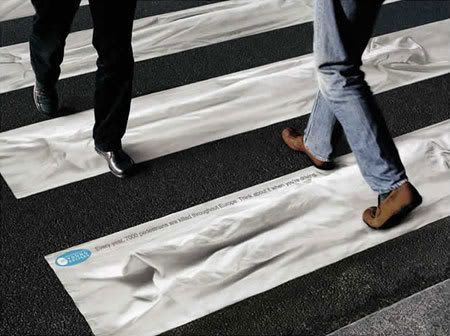Is there a relationship between the conceptual thinking behind Marcel Duchamp’s 1917 urinal and contemporary design practice? Design writer and Design Observer contributer Nick Currie believe’s there is. In an AIGA feature of 1995, Currie presented some interesting thoughts on the evolution of Conceptual Art and its impact on designing for social impact. Currie’s feature, Conceptual Design: Building a Social Conscience begins by exploring if there has ever been “Conceptual Design?”’ and moves on to discuss how the conceptual arts of the early 1900s has led young designers to think more about social issues than consumer goods.
“There’s a generation of young designers who, almost a century after Duchamp, seem to share something of his spirit… Rather than products, these people are designing situations, intervening in existing arrangements, framing everyday activities in ways that make us think of them, unexpectedly, as “design.” And although they’re often satirical in tone, these designers share a concern with ethics and responsibility; one of the reasons the design they make is so often immaterial is their sense that the last thing the world needs is more objects, more consumer goods. The widening ripples of Duchamp’s gesture blend, in their work, with the repercussions of a gathering concern around issues like sustainability, community and responsibility: to be conceptual is, after all, to be thoughtful. ”
[article continues...]
Although, I do see the connection between Conceptual Artists influencing the IDEO-esq thinking and design practice of today, I find it difficult to trust Conceptual Art has made [enough] significant impact to today’s design industry. Few agencies and/or designers seem to pride themselves on conceptual- research- idea- centric design, that makes signifcant impact to social and behavioural change. Nevertheless, this article is a worthy read for any designers influenced [like myself] by Conceptual Art/thinking and Surrealism.










0 comments:
Post a Comment